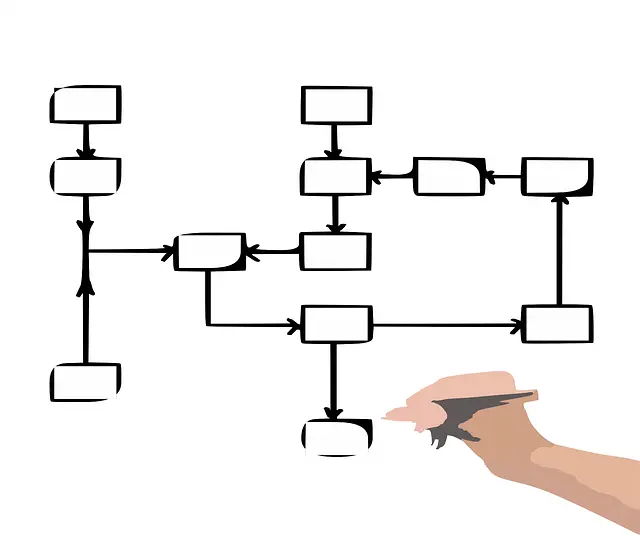Ray Dalio is part of the world’s richest people; therefore, that means he must be doing the right thing, yeah? However, as you’ll notice in these book chapters, directing a successful operation isn’t a difficult thing. Anybody can manage a successful business by having a set of vital values that are usually there to put them on the right track.
Knowing what’s most significant in your company is, definitely, a really personal issue that you need to work out for yourself. However, from a business perspective, there are some principles that only make sense, such as being honest with your coworker so as to form a space of trust and transparency that will keep difficulties from festering. Therefore, let’s dig in and know more about Ray Dalio’s keys to success!
Look to nature as well as evolution so as to have your eye on the big picture.
At times life can be very overwhelming, with a lot of questions coming at you from every angle, that it seems like you’re stuck in a blizzard, not able to see beyond a foot in front of your face. In those kinds of circumstances, it is not possible to know which direction you’re meant to turn or what choices you should take.
This is the reason why having a solid set of guiding principles in your life is vital. Such as having a compass in a blizzard, being fortified with those kinds of principles entails that you’ll usually know precisely where you’re headed and which decisions will keep you in that direction, regardless of the situation.
In a nutshell: having principles will give you the basic truths that can be used to any circumstance, letting you proceed toward your goals as well as the life you wish to have.
When you are working out your guiding principles are; it’s vital to keep a realistic view on life. Don’t deceive yourself into believing that life won’t be chaotic and uncomfortable sometimes. The author strongly knows that reality isn’t usually pretty, and this knowledge brought about one of his principles: to always be guided by rational thinking, not feelings.
Eventually, all of us will get reminded of the reality that life isn’t usually perfect, and it’s vital to remember this.
Consider nature. It’s sad to see an attractive gazelle get eaten by a pack of brutal hyenas. However, this is only a natural reality of life –an aspect of the balanced ecosystem that has grown over time. If you were to reject this fact and attempt to come in, it would have risky consequences.
Therefore, bear in mind that things will go wrong at times. Also, bear in mind that failure usually gives a beneficial opportunity to learn, adapt, and grow.
Any organization that’s been in existence for a long time has had to adapt to transformation and bounce back from difficult periods, which is ultimately what you’ll need to do, as well. Take the difficult periods in stride, and keep learning and improving all the time.

Chapter 1 – It’s vital to select the appropriate goal and to continue learning and getting better.
You don’t need to be a skilled athlete to put athletic training approaches to work. As a matter of fact, considering life as a game can assist you to stay concentrated on having outcomes and attaining your goals.
Also, this viewpoint can make it easier to survive the bad periods. The best athletes have dry spells too. Therefore, it’s smart to bear in mind that life won’t be one long winning streak. When situations aren’t going well, it’s best to stay calm until things change.
However, you can’t begin playing without having a decisive goal in mind, and the key to good goal-setting is to prioritize and reduce the number of choices.
In life, almost anything is possible; however, you can’t have it all. A popular error is to reach for a lot of goals, all at the same time. However, the reality is, anytime you pick a goal, you’re inevitably excluding a number of other goals in the course. Therefore, the wise thing is to decide sensibly by looking within and knowing what you want the most.

Now, if there’s a thing you feel passionate about; however, you don’t feel competent enough to learn, that doesn’t signify that you have to push it away. Bear in mind that, it’s never really late to further your education, learn new skills, and develop the skills you have already.
As soon as your goal is set, the next thing to do is to methodically look at the circumstance and pinpoint any difficulties or hindrances that are in your way. This is where being realistic is important. Don’t disregard issues since they’re too personal and do not underestimate a possible problem by being excessively optimistic.
If you have a personality feature that you’d rather not acknowledge, such as a tendency to be distracted easily don’t dodge it. Admitting your weaknesses doesn’t mean allowing them to control you. Acknowledging that they are there is the first step to improving yourself and learning how to control your weaknesses.
Chapter 2 – The secret to meaningful and long-lasting relationships at work are radical truth and transparency.
Ray Dalio, the author is the owner of Bridgewater Associates, which is an investment firm that practices another of Dalio’s principles of doing business: radical truth and transparency.
Radical truth is essentially about ensuring that significant problems don’t stay hidden, which entails forming a surrounding where workers are free to talk about their minds. This type of transparency is protection against poor choices because coworkers will regularly be exchanging criticisms, making developments as well as detecting errors before they occur.
Radical truth applies to the executives at Bridgewater Associates too.
When a company is thinking about closing or selling one of its branches, a lot of executives choose to make things quiet and only inform the workers at the last possible minute. However, when this case was happening at Bridgewater, the senior managers had a worker’s meeting and were totally honest about the undecided sale.
This is the thing: if managers aren’t honest about an upcoming sale, it can lead to a great deal of distrust as well as hatred among workers– since, in all odds; rumors about the sale will spread regardless of anything. Therefore, why not display respect by saying the truth?
Radical transparency is related to radical truth. It entails being honest about the type of deed and work that management wants from workers, and vice versa.

Managers, as well as workers, have to treat each other as they would a partner in a long-term relationship. This entails displaying mutual respect, watching out for what’s in the other person’s best interest, and being very clear about who’s in charge of what.
You’ll see that a place of work is at its best when workers express more consideration for their coworkers than they expect to be shown. Yes, this is a radical method because the majority of the people might be conversant with fierce workplaces where everybody is just looking out for him- or herself. However, you’ll see that productivity, as well as quality, will get better when workers drop the selfish act and begin forming strong relationships based on generosity, cooperation, as well as candid transparency.
Chapter 3 – Radical truth spreads to performance evaluations too.
Being dishonest isn’t usually malicious behavior. Truly, humans are usually the most dishonest when trying to be kind.
One time, the author was thinking about promoting a worker to the Department Head. He was aware that a lot of these worker’s coworkers felt he earned the job. But, when the author checked the company’s performance tracking system, which had hundreds of pieces of data on all workers, the proof told another story – the worker being deliberated for promotion basically didn’t have the appropriate skills for the job.
You may reason that the nice thing to do in this circumstance would be to offer the worker the post based on the commendation of his coworkers; however, the secret to success isn’t radical kindness but it’s radical truth. Also, the fact is, you’ll be doing everybody a disservice by overlooking the fact that the worker isn’t prepared for the promotion.
As the majority of the people overestimate their abilities as well as the amount of work they do, doing accurate evaluations is vital to preventing issues.
When the author asked the workers of Bridgewater Associates and told them to give an estimation of the percentage of the company’s accomplishments they were personally responsible for, the total percentages added up to 301%. Definitely, managers need to have an exact knowledge of the amount of work each person is doing, since workers normally don’t.

However, accuracy, as well as honesty, are not just good for the general business; they’re as well good for every worker.
According to Psychologists, the leading motivator for personal growth is the pain you feel after making an error. When you feel really bad about doing something wrong that you never wish to feel like that again, it’s known as “hitting bottom” – and it’s usually what a person requires to completely change his or her behaviors.
Also, it is significant to bear in mind that sorting out a worker’s weaknesses is really time-consuming; therefore, it has to be given priority over rejoicing in success.
When handling strengths, it’s a somewhat simple issue of encouraging a worker to continue with the good work. For issues, the cause has to be known and solutions have to be figured out, all of which can take a lot of time and resources.
Chapter 4 – Flowcharts, as well as metrics, are great tools for greater performance.
When you set a goal in motion for your business, you can begin to think of your workers as parts in an engine – an engine that’s operating your company, or machine, down the route toward its goal.
The author’s goal was to give customers the best likely return on their investments, and he usually felt like a mechanic, popping open the hood to repair the engine of his Bridgewater machine.
This similarity, of the manager as a mechanic and company as a machine, is a perfect technique to keep your mind concentrated on the duties of the job and what requires to be fixed.
Each machine needs to have a process flowchart that simply reveals how work enters and moves from one worker to the next one until it is completed. Having this tool in hand, you’ll usually be able to identify the exact place where issues are arising and what you, the mechanic, have to do.
Nobody likes to scold or sack a worker; however, bear in mind that one of the basic principles of success is to be realistic. This signifies that you can’t deceive yourself into assuming that there’s a means to evade unpleasant business.

Metrics or performance measurements are another great tool to check your machine for likely maintenance needs.
When you set a system in place to precisely assess performance, it’s similar to having a dashboard for your machine, complete with flashing lights to give you a warning the instant something goes wrong.
Metrics can give a significant improvement to productivity, and because they’re not biased, accurate, and reliable, they’re perfectly appropriate to a setting that practices radical truth and transparency. With a precise view of exactly what workers are doing, and how well they’re performing it, you’ll see that the work of supervision nearly takes care of itself!
Now that you understand how to make your engine operating well, let’s examine how to build a strong machine.
Chapter 5 – Build companies from the top down and watch carefully the manager-to-employee ratios.
As you progress towards your goals, it’s just a matter of time before difficulties occur. However, there’s no cause to panic or be discouraged by these bumps in the road. Forming solutions for issues is how many companies get better. Meaning, the majority of the issues will end up giving fuel for your machine.
However, if you wish to change issues into advantages, you have to design your business in order for problems to be detected and solutions get implemented as fast as possible.
One of the best means to build your company is from the top down.
You can come up with a good business arrangement as being the opposite of a building – your foundation is situated at the top, which entails that, most importantly, you have to ensure you have great managers.
All managers have to be trustworthy and have high standards. If this isn’t the situation, their weaknesses, as well as poor performance, will ultimately spread to their staff. Conversely, managers who show their gratitude for great work, and have strong oversight and stern quality control, will direct teams of workers who rise to their level of excellent performance.
In order for issues to be addressed quickly, every department has to be given a specific amount of self-sufficiency and control over the resources they need. If bureaucracy is hindering departments from performing fast, your teams basically won’t be able to do their work.
Eventually, it’s wise as well to maintain a balanced ratio of managers to workers. A good rule of thumb is not to go beyond a ratio of ten to one.

The perfect ratio is closer to five workers for each manager, as this will provide your managers with the best opportunity of having significant relationships as well as mutual understanding with each worker. However, instead of having strict rules on team sizes, you’ll have the best outcomes by measuring each manager’s abilities and proceeding accordingly.
Therefore, now that you have a fundamental knowledge of the principles the author has utilized to find amazing success. It’s left to you to begin applying them and changing your organization into a constantly growing and constantly winning business.
Principles: Life and Work by Ray Dalio Book Review
A range of firm principles will assist you to make choices, even at the most chaotic and confusing times. These principles are determined by you; however, it’s usually a good thing to form radically truthful and radically transparent relationships with the entire people you work with. As a manager, you are similar to a mechanic, and your company is just like a machine. You can make use of flowcharts as well as metrics to keep things going smoothly and make sure that your company is strong by building it from the top-down and making manager-to-employee ratios little.
Know your blind spots.
Everybody has aspects where they’re closed-minded – meaning, where they have blind spots. Sadly, it’s really hard to identify where your blind spots are. Therefore, in order to know them, have a list of the situations surrounding bad choices you’ve made in the past. You could ask others–particularly individuals who noticed what you didn’t see– to assist you in this attempt. Pin this list up on the wall and check it whenever you’re thinking of making a choice in your blind-spot area. Also, don’t be scared to ask other people before moving forward.
Download Pdf
https://goodbooksummary.s3.us-east-2.amazonaws.com/Principles+by+Ray+Dalio+Book+Summary+-+Review.pdf
